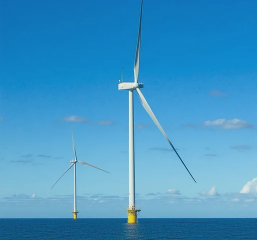The U.S. offshore wind sector, once set for major growth in New York and New Jersey, now faces significant disruptions. A January 2025 executive order paused all new offshore wind permits, stalling key projects like Empire Wind and Atlantic Shores. According to the American Clean Power Association (ACPA), these delays could result in 4,000 job losses and $2 billion in lost economic activity. These disruptions extend beyond project timelines; they introduce volatility into the energy market. With renewable capacity on hold, reliance on natural gas and coal increases—both of which are more vulnerable to price swings. This shift can put upward pressure on key components of supply costs, including energy generation charges, capacity charges, transmission Costs, and ancillary/RPS (Renewable Portfolio Standards) charges. In the following sections, we will explore how each of these cost components is impacted and what it means for energy consumers.
The halting of major offshore wind projects introduces significant economic and environmental uncertainties. Delays in deploying renewable energy prolong reliance on fossil fuels, which are more susceptible to market volatility. According to the U.S. Energy Information Administration (EIA), natural gas prices have surged 15% since project halts—the largest jump in three years. These delays also strain existing energy infrastructure, increasing maintenance costs that are often passed directly to consumers. In some regions, transmission rates have risen by over 75%, adding to the financial burden for commercial and industrial users. Understanding how pass-through costs are structured and preparing for potential increases can help businesses better manage their energy budgets.
The delay and uncertainty surrounding offshore wind projects are expected to create ripple effects across several key components of energy supply costs. As renewable energy projects stall, grid operators are forced to depend more heavily on natural gas and coal for power generation—fuels that are subject to volatile pricing.
Generation Charges:
With these projects delayed, reliance on natural gas has surged, pushing up generation charges. According to the U.S. Energy Information Administration (EIA), the average cost of natural gas for power generation increased by 27% from 2024 to 2025, primarily due to heightened demand and limited renewable alternatives. This shift not only raises wholesale energy prices but also impacts on monthly energy costs for commercial and industrial consumers.
Capacity Charges:
The pause in offshore wind projects has created a gap in projected renewable capacity, putting additional pressure on the grid to maintain reliability. It is important to note that New Jersey is part of the PJM Interconnection, while New York operates under the NYISO power pool—each with its own capacity markets and pricing mechanisms. Offshore wind was expected to supply consistent power during peak demand periods, reducing strain on traditional generation sources. Without it, grid operators in both regions must secure more fossil-fuel-based reserves to meet demand, driving up capacity charges. For instance, PJM’s 2025/2026 capacity auction cleared at approximately $270/MW-day, a steep jump from $28/MW-day the previous year, reflecting the added costs of ensuring grid reliability amid growing grid strain and capacity shortfalls. In contrast, NYISO’s capacity pricing mechanisms will follow their own market-based adjustments as supply shortfalls develop.
Transmission Charges:
Offshore wind was expected to ease congestion in high-demand areas of New York and New Jersey by providing local renewable generation. With these projects on hold, the grid must rely more on distant fossil fuel plants, increasing transmission costs and elevating the risk of congestion-related surcharges.
Renewable Portfolio Standards (RPS) and Ancillary Costs:
New York and New Jersey have aggressive RPS targets that mandate a portion of energy comes from renewable sources. With offshore wind projects delayed, energy suppliers face increased costs to purchase Renewable Energy Credits (RECs) or source alternative green energy. These compliance costs are then passed on to consumers, increasing the total energy supply cost.
The delays in offshore wind projects like Empire Wind and Atlantic Shores have revealed how shifts in energy policy and market dynamics can directly influence key components of energy supply costs. As renewable projects stall, reliance on fossil fuels grows, affecting generation charges. According to the U.S. Energy Information Administration (EIA), natural gas prices are projected to average $4.10 per MMBtu in 2025, up from $2.19/MMBtu in 2024. These shifts indicate heightened exposure to price volatility, as market demand for natural gas fluctuates to compensate for stalled renewable capacity. These policy-driven disruptions also extend to capacity charges and transmission costs, where the absence of local renewable generation heightens grid strain and drives up costs. Looking ahead, understanding how these shifts influence supply cost components will be crucial for businesses to navigate procurement strategies effectively in a changing energy landscape.




